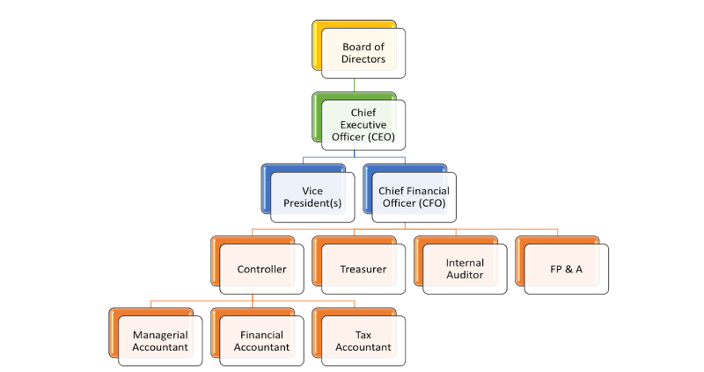The Importance of a Well-Organized Finance Department
A well-organized structure of finance department plays a critical role in the success of any business. It serves as the backbone of the organization, managing financial operations, ensuring compliance with regulations, and providing accurate financial information for decision-making. The structure of finance department is crucial in streamlining processes, improving efficiency, and maintaining financial stability.
Table of Contents
Key Roles and Responsibilities within the Finance Department
The structure of finance department typically consists of several key roles and responsibilities. These include the financial controller, financial analysts, accountants, bookkeepers, and payroll administrators. The financial controller oversees the entire finance department and is responsible for financial planning, reporting, and analysis. Financial analysts analyze financial data, create forecasts, and provide insights for strategic decision-making. Accountants manage financial transactions, prepare financial statements, and ensure compliance with accounting principles. Bookkeepers handle day-to-day financial record-keeping, while payroll administrators oversee employee compensation and benefits.
The organizational structure of finance department
The organizational structure of finance department may vary depending on the size and complexity of the organization. In smaller companies, the finance department may be relatively simple, with a few individuals handling multiple roles. However, in larger organizations, the structure is typically more hierarchical, with specialized teams focusing on different financial functions. These teams may include accounts payable, accounts receivable, financial planning and analysis, tax, and treasury. The hierarchical structure ensures clear lines of authority and accountability, enabling efficient decision-making and collaboration.
The Interplay between Finance and Other Departments
The structure of finance department does not operate in isolation but interacts closely with other departments within the organization. It collaborates with the sales and marketing departments to develop pricing strategies and assess the financial impact of marketing campaigns. The finance department also works with the procurement and supply chain departments to manage vendor relationships, negotiate contracts, and optimize inventory levels. Additionally, it liaises with the human resources department for payroll processing, benefits administration, and compliance with labor regulations. Effective communication and coordination between the finance department and other departments are vital for achieving the organization’s overall objectives.
Technology and Tools for Efficient Finance Operations
In today’s digital era, technology plays a crucial role in enhancing the efficiency of finance operations. The structure of finance department utilizes various software applications and tools to streamline processes, automate tasks, and improve accuracy. Enterprise resource planning (ERP) systems are commonly used to integrate financial data with other business functions, enabling real-time reporting and analysis. Additionally, financial management software helps track expenses, manage budgets, and generate financial statements. Advanced analytics tools provide insights into financial trends and performance indicators. The effective use of technology empowers finance departments to optimize their workflows, reduce errors, and make data-driven decisions.
The Importance of Communication and Collaboration within the Finance Department
Communication and collaboration are key components of a successful structure of finance department. Regular communication ensures that all team members are aligned with the organization’s financial goals and objectives. It enables the sharing of important information, updates on financial performance, and identification of potential issues or risks. Collaboration within the finance department promotes knowledge-sharing, problem-solving, and the development of innovative solutions. It also fosters a positive work environment, where team members feel supported and motivated to achieve excellence in their roles.
Continuous Improvement and Adaptability in the Finance Department
The finance department must continuously strive for improvement and adaptability to meet the evolving needs of the organization. This involves staying updated with changes in financial regulations, industry trends, and technological advancements. The finance department should regularly evaluate its processes, identify areas for improvement, and implement necessary changes. Embracing new technologies and tools can enhance efficiency, accuracy, and productivity. Additionally, fostering a culture of learning and professional development within the finance department ensures that team members are equipped with the necessary skills and knowledge to excel in their roles.
Ensuring Compliance and Risk Management in the Finance Department
The structure of finance department must incorporate robust compliance and risk management practices. Compliance involves adhering to financial regulations, accounting standards, and internal control procedures. The finance department should establish controls to prevent fraud, errors, and misappropriation of funds. Risk management is essential for identifying and mitigating potential financial risks that could impact the organization’s financial stability. This includes assessing credit risks, market risks, operational risks, and implementing appropriate risk mitigation strategies. A well-designed structure ensures that compliance and risk management are embedded in the finance department’s operations.
Performance Evaluation and Reporting in the Finance Department
Measuring and reporting financial performance is a critical function of the finance department. It enables stakeholders, including management, investors, and regulatory authorities, to assess the organization’s financial health and make informed decisions. The finance department should establish key performance indicators (KPIs) to evaluate its own performance, such as accuracy of financial reporting, timeliness of closing the books, and effectiveness of cost control measures. Regular financial reporting, both internal and external, provides transparency and accountability. Effective performance evaluation and reporting contribute to the overall success and credibility of the finance department.
Conclusion – structure of finance department
The structure of finance department is fundamental to its success in supporting the organization’s financial management. A well-organized finance department ensures efficient operations, compliance with regulations, and the provision of accurate financial information. Key roles within the finance department, such as financial controller, financial analysts, accountants, bookkeepers, and payroll administrators, collaborate to achieve the organization’s financial objectives. Effective communication and collaboration with other departments, along with the use of technology and tools, further enhance efficiency and decision-making. Continuous improvement, adaptability, compliance, risk management, performance evaluation, and reporting are vital components of a well-designed finance department structure. By understanding and implementing these principles, organizations can establish a finance department that optimizes financial operations and contributes to overall business success.
Learn about: Unlock the potential of AI startup ideas and revolutionize the future of news reporting today!

